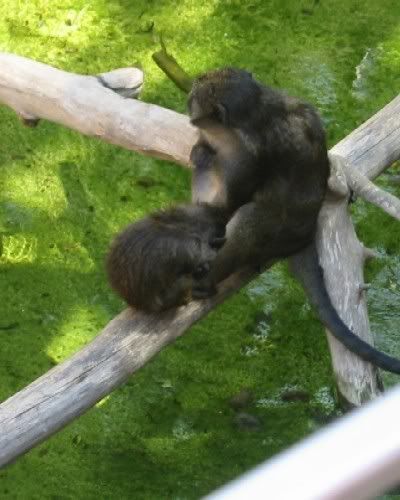
Allen’s Swamp Monkey
and Child
This is your basic swimming primate. As the name suggests, they live in swamps. They have developed a bit of webbing between their fingers and toes, but I’m sure that would in no way have anything to do with evil-ution. They are related to guenons, but are not in the same genus.
Swamp monkeys, who live in social groups with as many as 40 members, live in the countries of the former Belgian Congo. They eat fruits, leaves, beetles and worms. The genus is classified as near-threatened.
After seeing the pandas and the cats, it was time to head up the escalators to primate territory. On the way there we passed bears. Most of the bears were apparently disinclined to venture out on such a hot day. Below on the right are Montana and Scout, grizzly bears who were rescued from a dump in Montana along with their mother. Mom went to a separate zoo.
On the left is Karen, the orangutan who survived open heart surgery in 1994, when she was 2. I had to play with the color a bit in order to eliminate reflections on the glass.
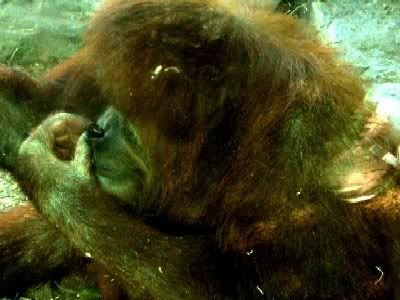 |
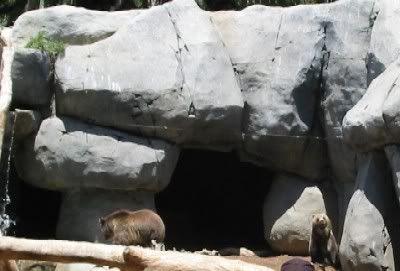 |
Below on the left a blow-up of one of the grizzlies. All grizzly bears are brown bears, but not all brown bears is a grizzly, aka the silvertip bear.
On the right is a ____. I know I should have paid more attention to the name when I took the pic, but I didn’t and couldn’t identify it with more than “black monkey with white cheek stripe having a bad hair day.” Then I took a flyer on it being an ape rather than a monkey and discovered it was indeed the smallest of the apes, a white-cheeked gibbon, from Vietnam, Laos and southern China. There is insufficient data to determine its conservation status.
 |
 |
At the top of the escalator where gorillas! Western Lowland gorillas are critically endangered, not because of their numbers (100K previously unreported members of the species live in a preserve in the Republic of Congo), but because they are susceptible to the Ebola virus.
The Cross River Gorilla of Nigeria and Cameroon is critically endangered, with only 250-300 individuals remaining.
Eastern gorillas are listed as endangered, but are actually more endangered than their Western genus-mates. There are 16000 or so Eastern Lowland gorillas, but only about 700 of the Eastern Mountain gorillas. They reside in parts of what used to be Zaire, Uganda, and Rwanda.
Both the Cross River subspecies and the Eastern species of gorillas are in decline because of the the hunt for bushmeat and the destruction of habitat.
All the gorillas below are Western gorillas:
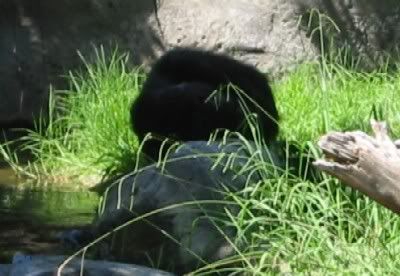 |
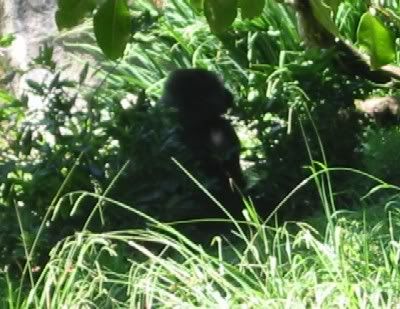 |
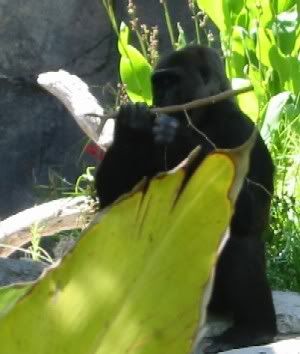 |
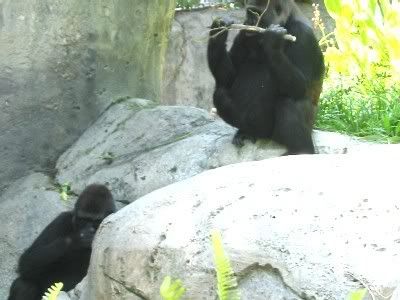 |
The orangs, as far as I could tell, were Karen and Satu (upper row) and Cinta (bottom left), who refused to sit still for a photo. Satu was very, shall we say, preoccupied.
The orangs are housed with the siamangs, but they refused to come out of their cave while we were there. We understand that orangs and siamangs have established bonds of friendship.
Orangutans are the only great apes native to Asia. The Bornean species is endangered. The Sumatran species is critically endangered.
 |
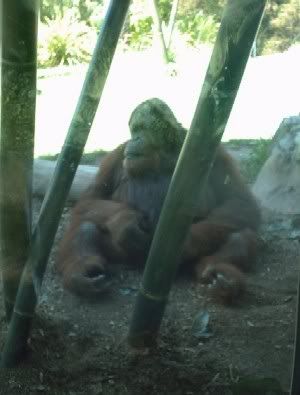 |
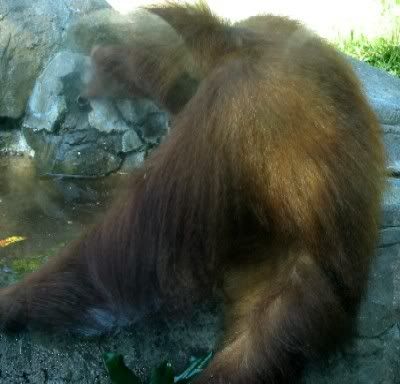 |
 |
If you get to the very top of the hill, as exhausted and worn down as you may be, there are polar bears. Polar bears are listed as vulnerable, though you would think they would be critically endangered, given the knowledge of habitat destruction we have. The International Union for Conservation of Nature and Natural Resources believes at current trends polar bears will be “extirpated from most of their range” in less than 100 years.
Polar bears are one of the only land animals which considers humans food.
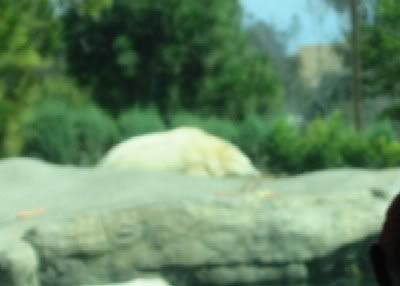 |
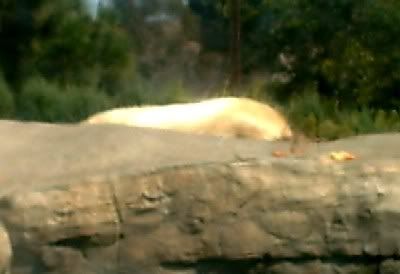 |
 |
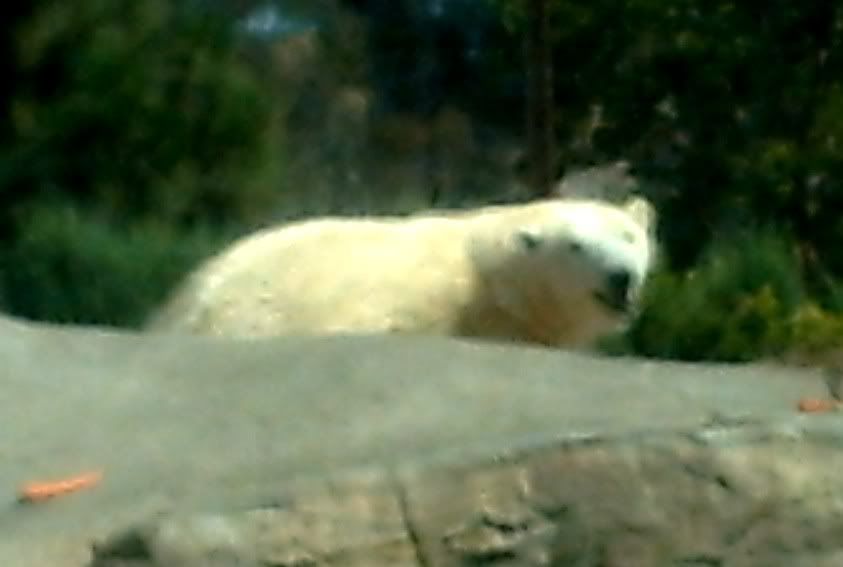 |
Two primates with a statue of a gorilla:

Birds are so hard to photograph in zoo. Their cages make it hard enough, but their quick movements challenge any camera with a slow shutter speed. So mostly below are failures, with little more than flashes of color:
 |
 |
 |
 |
After the polar bears, we took the sky tram back towards the exit:
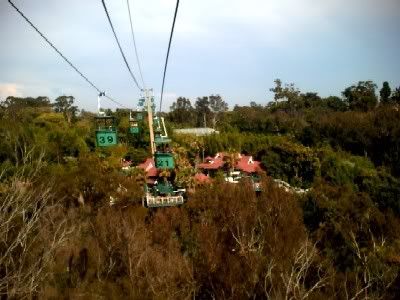
Before we left, we took in the tortoises and sea lions, up next.

6 comments
Skip to comment form
Author
…of the Treehouse Cafe, from the tram:
You’ve had me LOL at your commentary in each of them. 🙂
And I love animal pictures.
I can think of a few humans I wouldn’t mind feeding to the polar bears.
and I am quite taken with them.
I agree birds are hard to take pictures of. I wish I could have fit in your suitcase looks like you had a great time.